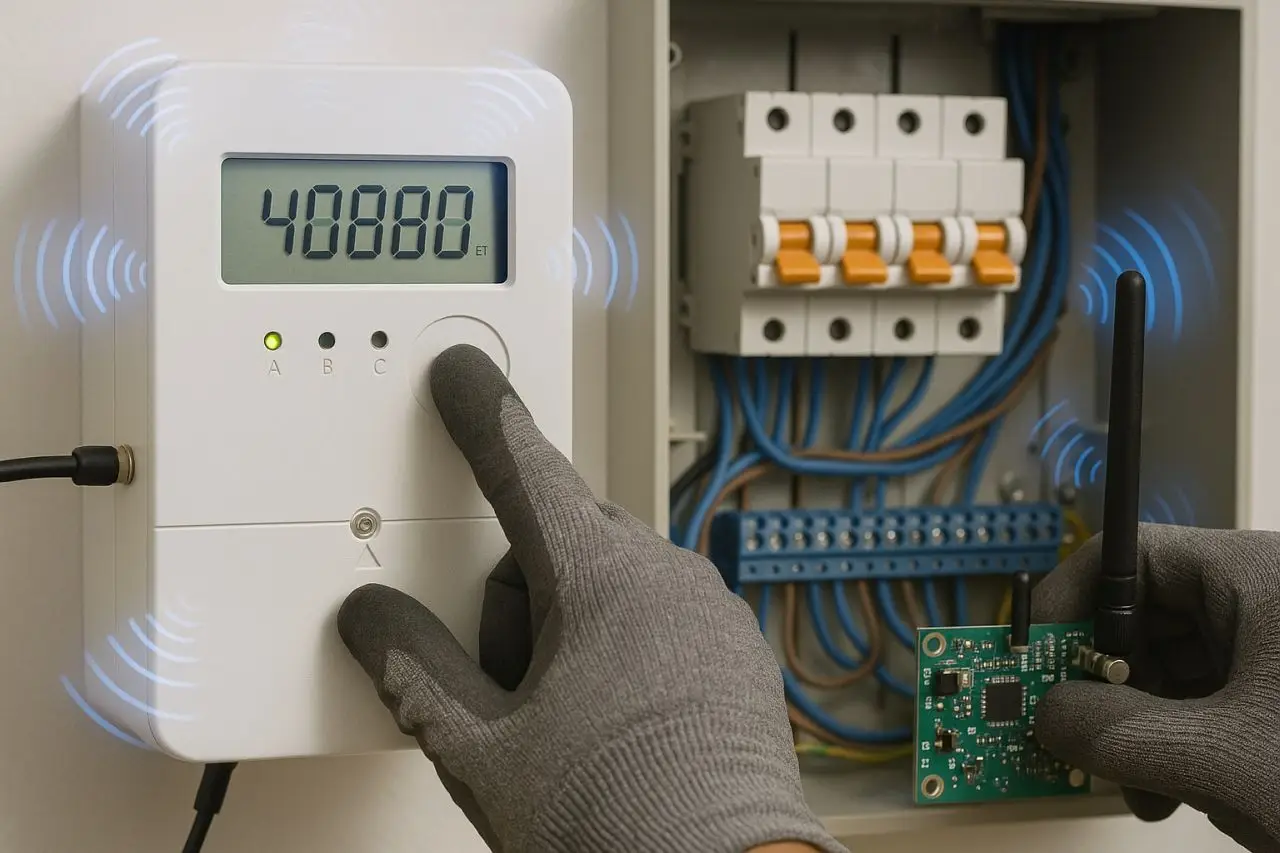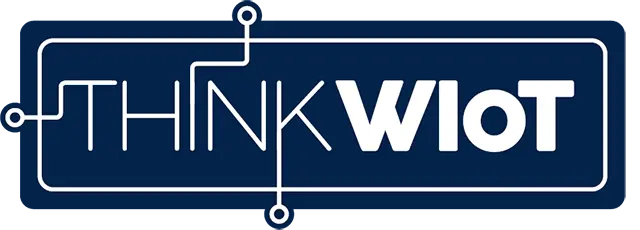Smart Metering: Smart Meters and Wireless Networks for Modern Energy Systems
Smart metering infrastructure and its enabling wireless communication networks are fundamental to transforming energy systems into flexible, decentralized, and sustainable grids that actively involve consumers.
- Published: September 27, 2025
- By: Anja Van Bocxlaer
- Read: 12 min
- Smart metering is essential for grid modernization and supports decarbonization efforts.
- Wireless communication technologies enable flexible, cost-effective connectivity across diverse environments.
- Advanced smart meters facilitate real-time pricing and demand-side management to balance supply and demand.
- Data privacy, security, and interoperability remain critical challenges for large-scale deployment.
- The integration of smart meters with distributed energy resources empowers consumers as active market participants.

State of Play in Smart Metering
A Central Pillar of Modern Grids
Smart metering has become essential infrastructure for utilities worldwide. What began as a way to eliminate manual meter readings has evolved into a key tool for achieving grid modernization and decarbonization goals.
Across Europe, policy has been the primary driver. The EU mandates advanced metering infrastructure (AMI) wherever cost-benefit analyses support it. This push has produced national strategies and large-scale deployments across the continent.
Uneven Global Rollout
While some countries have achieved near-universal coverage, others remain in early stages:
Italy was an early leader, rolling out its first generation of smart meters over a decade ago. Now, second-generation devices with advanced features are being deployed.
France has installed over 35 million Linky meters nationwide.
Germany has adopted a cautious, regulated rollout, prioritizing large consumers first.
Beyond Europe, adoption is even more varied. The United States has installed over 100 million smart meters, reaching most residential customers. China leads globally with over half a billion smart meters as part of its extensive grid modernization. In many emerging markets, rollout is slower, often limited by up-front costs or policy frameworks.
Benefits Beyond Billing
Smart meters deliver more than just accurate billing.
For utilities, they reduce operational costs by eliminating manual readings and enabling remote connect/disconnect. They support outage detection, tamper alerts, and improved load forecasting.
For consumers, they promise better insights into consumption patterns, fewer billing disputes, and access to new tariff models that reward flexible usage.
Most importantly, smart meters enable demand-side management: shifting consumption away from peak times to reduce costs and improve grid stability. This capability is crucial as renewable energy’s share grows, with its inherent variability requiring a more flexible grid.
Technical and Regulatory Challenges
Despite progress, smart metering faces significant challenges.
Data privacy is a major concern, especially in regions like the EU where strict regulations such as GDPR govern the collection and storage of personal consumption data. Utilities must balance data granularity with consumer rights and cybersecurity needs.
Interoperability remains an ongoing issue. While standards like DLMS/COSEM help, many deployments still struggle with vendor lock-in and fragmented system integration. Managing millions of devices that use different communication technologies—Wireless M-Bus, LoRaWAN, Wi-SUN FAN, NB-IoT—adds complexity, particularly when utilities need hybrid architectures to reach rural, urban, and hard-to-access areas.
The Cost Factor
Cost remains politically sensitive.
Smart metering programs require significant up-front investments in meters, installation, IT systems, and communication networks. While these costs pay off over time through operational savings and better grid management, they can be difficult to justify to customers who see little immediate benefit on their bills.
Public acceptance also hinges on engagement: even with smart meters installed, dynamic pricing models depend on customers actively shifting their usage. Without meaningful incentives and education, the full potential of smart metering goes unrealized.
A Transition to Next-Generation Use Cases
The “status quo” is one of partial transformation.
Many early rollouts focused on automating billing processes, but the next phase is about enabling real-time data exchange, dynamic pricing, and integration with distributed energy resources like rooftop solar and home batteries.
Regulators are responding with new requirements:
Enforcing interoperability to avoid vendor lock-in.
Requiring secure-by-design systems.
Encouraging or mandating dynamic tariff structures that reflect real-time conditions on wholesale power exchanges.
Smart meters are increasingly seen not just as billing devices but as gateways to a more flexible, resilient, and decarbonized energy system. They are the foundation for an electricity market where consumers become active participants and prices reflect real-time supply and demand.
Deployment and Wireless Communication
Building the Smart Metering System
A smart metering system is much more than just the meter itself. It includes communication modules, data concentrators, head-end systems, and Meter Data Management (MDM) systems that handle large volumes of consumption data securely and reliably.
The core challenge in deployment is ensuring reliable, cost-effective communication between millions of meters and utility back-end systems. This is where wireless technologies play a critical role, especially in diverse environments that range from dense cities to remote rural areas.
The Need for Wireless Flexibility
Wired technologies like Power Line Communication (PLC) are still used extensively—particularly in countries with strong legacy infrastructure. But they can be limited by signal degradation over distance or noise in older grids.
Wireless solutions offer flexibility, easier deployment, and cost savings, especially where installing new cables isn’t practical. Utilities increasingly use hybrid systems, combining wired and multiple wireless technologies to match local needs.
Wireless M-Bus: The European Workhorse
Wireless M-Bus is a staple of European metering, particularly for water and gas. Operating in sub-GHz license-free bands (such as 868 MHz in Europe), it offers reliable communication with low power consumption, enabling battery lifetimes of a decade or more.
It supports both unidirectional and bidirectional modes. In dense urban areas, it enables drive-by or walk-by meter reading without entering buildings, while fixed-network setups can collect data continuously.
Utilities value its mature ecosystem and standardized protocols, making integration with MDM systems relatively straightforward.
LoRaWAN: Long-Range, Low-Power Networks
LoRaWAN has become a popular choice for smart metering thanks to its long-range capability and extremely low power requirements.
Using a star network topology, meters send data to nearby gateways, which forward it to a central network server. A single gateway can cover several kilometers in cities and tens of kilometers in rural areas, reducing the need for infrastructure investment.
This makes LoRaWAN especially attractive for water, gas, and even electricity meters in areas without existing communication networks. Its open standard ensures interoperability between device manufacturers and network providers.
Why LoRaWAN is Ideal for Smart Metering
LoRaWAN is especially well-suited for smart metering because it combines long-range coverage, low power consumption, and cost-effective deployment. Its ability to transmit data over several kilometers—even in urban environments—means fewer gateways are needed, reducing infrastructure costs.
Low power requirements enable battery lifetimes of over 10 years, making it perfect for water, gas, and remote electricity meters that need maintenance-free operation. LoRaWAN’s flexibility supports both private and public networks, allowing utilities to tailor solutions to urban, suburban, and rural areas alike.
As an open standard, LoRaWAN ensures interoperability between devices and vendors, preventing lock-in and enabling easy scaling. Overall, it offers a reliable, economical, and future-ready communication platform for modernizing metering infrastructure and supporting advanced services like leak detection and dynamic pricing.

Wi-SUN FAN: The Mesh for Smart Utilities
Wi-SUN Field Area Networks (FAN) offer another approach, designed specifically for utility-scale deployments.
Unlike star-topology networks, Wi-SUN uses a mesh architecture where each device can relay messages for its neighbors. This self-healing network is resilient in urban environments with obstacles like buildings or hills.
Built on IPv6, Wi-SUN supports robust security, large device counts, and even over-the-air firmware updates. It’s ideal for dense deployments in smart cities, where meters, streetlights, and sensors can share a common network.
Cellular Solutions: NB-IoT and LTE-M
For isolated meters in rural or hard-to-reach areas, leveraging existing cellular networks is often the most cost-effective approach.
NB-IoT and LTE-M are optimized for IoT applications, offering strong coverage, low power modes, and secure communication without the utility having to deploy its own gateways.
This pay-as-you-go approach is particularly appealing for utilities needing to connect small numbers of dispersed meters without investing in dedicated infrastructure.
Combining Technologies for Complete Coverage
In practice, no single technology fits every scenario.
Utilities typically adopt hybrid communication architectures:
PLC may connect meters in urban neighborhoods to data concentrators.
Wireless M-Bus or LoRaWAN might serve apartment blocks or suburban developments.
Wi-SUN mesh networks can blanket entire cities with resilient coverage.
Cellular solutions fill gaps in remote or low-density areas.
This multi-technology strategy ensures reliable data collection everywhere, while optimizing costs and performance.
Read also:
NXP Semiconductors has unveiled the UBX100, a compact, ultra-low power sub-GHz* RF (Radio Frequency) transceiver engineered for Wireless M-Bus smart metering and ready for next-generation Wi-SUN FAN support.
Zenner USA, EchoStar Mobile and Semtech have jointly unveiled the world’s first direct-to-satellite LoRaWAN®-enabled water meter, offering a groundbreaking solution for utilities seeking truly ubiquitous connectivity without relying on terrestrial networks.
The Importance of Integration
But deployment doesn’t end with connectivity.
All these communication technologies must integrate with head-end systems and MDM platforms that can handle diverse data formats, ensure data privacy, and deliver timely information for billing, forecasting, and grid management.
Interoperability is critical to avoid vendor lock-in and to ensure that meters, gateways, and software systems can evolve as standards and regulatory requirements change.
Enabling the Smart Grid Vision
Ultimately, the deployment of wireless communication in smart metering isn’t just about reading meters more efficiently.
It’s about creating the data infrastructure needed to support dynamic pricing, real-time grid balancing, and consumer participation in the energy market. By connecting millions of endpoints securely and reliably, these wireless technologies lay the foundation for a smarter, more sustainable, and more responsive energy system.
From Billing Automation to Grid Transformation
Smart metering is no longer just about automating billing. Utilities and policymakers increasingly see it as critical infrastructure for the energy transition.
By delivering detailed, timely consumption data, smart meters enable new ways to balance supply and demand, integrate renewable energy, and involve consumers directly in managing their energy use.
The move toward flexible, decarbonized grids depends on turning this data into action—and that means changes in technology, regulation, and business models.
Enabling Real-Time Pricing
One of the most significant trends is the shift toward real-time or dynamic pricing.
Today, most residential customers pay flat rates or simple time-of-use tariffs with static peak and off-peak periods. But power markets like EPEX SPOT in Europe already trade electricity in 15-minute intervals, with prices reflecting real-time supply and demand.
Smart meters make it possible to pass these market signals directly to end-users. Customers could see hourly or sub-hourly price updates, encouraging them to shift consumption to cheaper, cleaner times.
For example, households might charge electric vehicles or run heat pumps when wind or solar generation is plentiful. Industrial consumers could optimize production schedules in response to price signals.
This real-time pricing model promises a more efficient energy system, reducing peak demand and supporting renewable integration. But it also requires robust communication networks, secure data handling, and user-friendly interfaces that help consumers make informed choices.
Supporting Demand-Side Flexibility
Beyond pricing, smart meters are central to demand-side management strategies.
By knowing when and how customers use energy, utilities can develop programs that automatically shift or reduce loads at critical times. Aggregators can combine small-scale flexibility from thousands of homes and businesses to provide grid services traditionally delivered by power plants.
This flexibility is vital as renewable generation grows. Unlike conventional plants, solar and wind output can’t be dispatched on demand, making balancing supply and demand more challenging.
Smart metering data is the foundation for forecasting, planning, and verifying these flexible resources.
Integration with Distributed Energy Resources
Another trend is the rise of distributed energy resources (DER). Rooftop solar, home batteries, and electric vehicles can all both consume and supply electricity to the grid.
Smart meters enable two-way measurement, so utilities can track exports as well as consumption. Advanced metering systems can also communicate with smart inverters and chargers, coordinating local generation and load in real time.
This integration helps maintain voltage and frequency stability, reduces grid congestion, and makes the system more resilient. It also empowers consumers to become “prosumers” who actively participate in energy markets.
Evolving Communication Needs
All of this depends on reliable, scalable communication networks.
Wireless technologies like Wireless M-Bus, LoRaWAN, and Wi-SUN FAN are evolving to support higher data volumes, more frequent reporting intervals, and secure firmware updates.
Wi-SUN’s IPv6-based mesh networks offer resilience in urban environments, while LoRaWAN’s long range is ideal for suburban and rural deployments. NB-IoT and LTE-M leverage mobile networks to reach even the most isolated meters.
Utilities are investing in these networks not only for metering, but also to support other smart grid and smart city applications—from street lighting to water monitoring.
Data Privacy and Security
As data volumes grow, privacy and cybersecurity are top priorities.
Smart meters generate detailed profiles of household energy use, which could reveal occupancy patterns or appliance usage if misused. Regulations like the EU’s GDPR impose strict requirements on consent, data minimization, and transparency.
At the same time, cybersecurity threats to energy infrastructure are growing. Utilities must design systems that are secure by design, with strong encryption, authentication, and update mechanisms.
Balancing rich data flows with consumer rights and security is an ongoing challenge that will shape future deployments.
Regulatory Push for Interoperability
Regulators are also increasingly demanding interoperability.
Utilities need to avoid vendor lock-in and ensure that meters, communication modules, and software systems can work together, evolve over time, and adopt new standards.
This interoperability ensures competitive markets for metering services, reduces costs, and future-proofs investments against rapid technological change.
Toward a Flexible, Decarbonized Future
The broader panorama shows smart metering as an essential enabler of the energy transition.
By providing granular, reliable data, smart meters unlock new tariff models, enable demand-side flexibility, integrate distributed generation, and support a more resilient grid.
Utilities, policymakers, and technology providers are all moving from first-generation deployments focused on billing automation toward next-generation systems designed to deliver real-time, bidirectional communication and full integration with market signals.
The vision is clear: a dynamic energy system where consumers are active participants, prices reflect real-time conditions at the power exchange, and the grid can accommodate a growing share of renewable energy. Smart meters—and the communication networks that connect them—are the foundation of this future.
Anja Van Bocxlaer - Managing Director, Think WIoT
